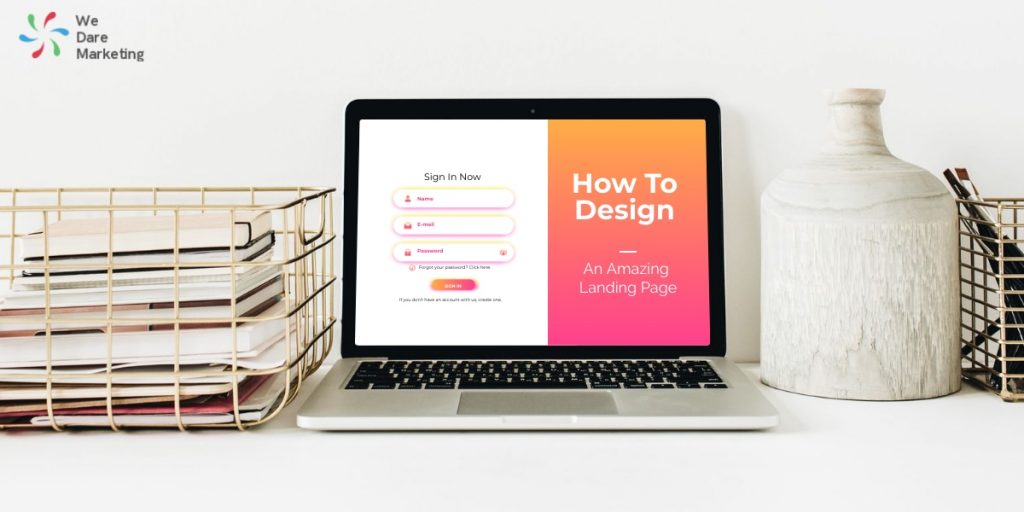Let’s be honest, redesigning your landing pages is hard. But creating landing pages from scratch is even harder.
Which kind of landing pages are best suited for your industry?
What kind of landing page should you create for a specific use case?
How do you achieve the delicate balance between great landing page design and copy?
Believe us. we’ve been there. What’s helped us most in situations like these is looking outward for inspiration.
In this article, we’re sharing some landing pages guidelines, suggestions, and examples we’ve found online spanning multiple industries and use cases.
The fundamentals to landing page design
Before you create your landing page, think about what information a visitor will need before take action (take action = to convert). Then plan how to communicate all this information to your visitor in a clear and fun way.
Will there be a video? Pictures? Should we just copy it? Find out what the barriers your potential customers face on the page and how to overcome them. If you create a clear path to transformation, customers will follow.
Moreover, keep in mind that these original plans are just guesswork. The only way to prove or refute the effectiveness of these decisions is to test every change to ensure an optimum conversion rate. If your assumption is that a video will convert better than an image on your landing page, be sure to do an A / B tes-t first to get data to support your decision.
Another way to do this is to basically to design different versions of your landing page. Design each variation with a different customer segment or strategy in mind, then test them against each other to find a winner.
Landing pages can be described as one-page websites that push the visitor toward a single action. This focus on a single purpose is the primary feature that makes landing pages different from other websites.
Amazing Landing Pages are Super Focused and to The Point
An amazing landing page has only one objective: prompting visitors to do the one action you want them to do and convert. This is why many landing pages don’t have menus or a ton of external links—you want your visitor to complete the call to action, not navigate away or get distracted.
Research has shown that 79% of people tend to scan a webpage instead of fully reading it, so the first description that customers see on your product page should be clear and to the point.
They answer questions that potential clients might have about your product
Before making a purchase, shoppers will want to be sure they know exactly what it is they’re buying. While you probably won’t be able to anticipate every possible question that could arise, you will want to make sure that customers have enough information to buy with confidence.
If you’re selling a piece of clothing, for example, tell shoppers what type of fabric it is and how they can expect the item to fit.
Customers aren’t able to physically interact with products while they’re shopping online, which means they rely on your product photos to help convince them to buy. In fact, 92% of consumers say that visuals are the top influential factor affecting a purchase decision, so make sure that the imagery on your page conveys texture, size, scent, or any other aspects of your product that might be of interest to your customers.
They Keep Scrolling to a Minimum
It can be great to include additional information about your offer on a page, but visitors should have everything they need—including the CTA button—without scrolling for days. While long-form landing pages can convert in the case of complex offers, consider using lightboxes to showcase extra info instead of adding tons of page sections.
A lightbox is a window overlay that appears over a webpage, blocking some of the content and dimming and disabling the rest of the background. This ensures a site visitor cannot interact with other content on the website until they take action — either by clicking a button, filling out the popup, or exiting out of it. Though it can appear anywhere on the screen, a lightbox most often appears in the center.
Amazing Landing Pages Use Relevant, Engaging Visuals
Amazing design requires striking images. No matter how technical your offer (see the Panoply example below), you need something to break up the text. Your images should be engaging, relevant, and consistent with your brand. They should also encourage visitors’ eyes to scan the landing page and settle on the CTA button.
They Maintain Consistent Branding
Your landing page design should be consistent with your overall look so visitors can instantly recognize and associate it with your brand. This typically means using the same color scheme and design elements from your general website. It can be a tough line to walk, though, because landing pages should look different from your overall website—they’re generally simpler and don’t include navigation, for example. Nonetheless, the branding and colors will often remain the same.
Look and feel of a landing page
When an audience lands on your landing page, how does it actually feel? Have you ever noticed that the very first thing that comes into focus in your mind when you open a landing page is something that makes it seem like a page you’ve never seen before – with something that grabs the brain and takes over the senses?
There is nothing less than remarkable feeling like that when you land on your own website. That is when you really need an outstanding Landing Page.
If you don’t make use of landing pages, you’ll forever be missing one of the most critical tools
Build trust with social proof
In general, undecided visitors are more likely to convert if they see trustworthy testimonials on your landing page. What makes a testimonial trustworthy? Video, if you can swing it. If not, include their full name and a headshot.
Some other ways to add social proof to your landing pages:
- Media mentions and unsolicited reviews.
- Quantifying your customer base. If you’ve seen a significant amount of adoption for your product or services, add the impressive number to your landing page like Basecamp.
- Showcase your customers by embedding a social feed on your landing page. Your customers can often be your biggest advocates, so let them speak for your excellence and attract more conversions for your business.
Clear call to action.
I am always asked whether or not a landing page needs a clear call to action.
What exactly is a clear call to action?
A clear call to action is a strong purpose that the visitor can visualize if I give them the opportunity to do so. This purpose can be specific, or it can be general and relate to the whole of a business. It can be the name of the business, or it can be a short paragraph that describes the whole of the business.
Example: “Find out more about us, our industry, our company values, our services.”




I like your points, thank you. I am one of the people who scans websites lol unless i’m super interested!
These are great tips on how to create a landing page. You mention a lot of good points and I love that you actually explain and expand on each one.
Maureen | http://www.littlemisscasual.com
This is something I need to look into further. I need to create a proper landing page for my blog.
Grea information and will be useful to me when I create a landing page.
Those are great tips for landing pages! That makes sense not to include a menu to prevent readers from navigating away from the page.
I never knew the actual purpose of a landing page, this is a very insightful post. thank you!
landings’ design is an important part of the job for many specialists and businesses. I’d actually recommend hiring a pro, it’s your face after all. (As a pro-photographer I always recommend hiring a pro makeup artist for sessions because it’s their face after all)
This is very timely as I am organizing an online summit and I need to create a landing page. Will keep in mind to make it on point and keep scrolling to a minimum. Thank you for sharing these tips. Super helpful.
Such a timely post. I am looking to design a landing page for a new coloring books on my blog and this would be really helpful.